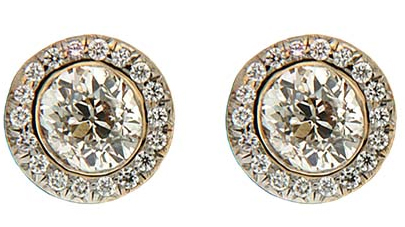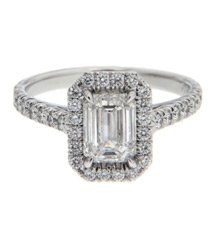 All that glitters is not gold, and that applies to diamonds as well. How can one tell apart a real and a fake diamond? There are 4 standard ways of telling this. However, the most fool-proof way of doing this is to make use of a jeweler’s paraphernalia and that inspection is done in a lab. But, if your point of contact is not an authorized dealer, you still have means of proving if it’s real or not. There are some back-fence remedial tests that you may perform on your own, the only equipment you would need is a diamond tester which you may borrow from your local jeweler and a magnifying glass which is widely available.
All that glitters is not gold, and that applies to diamonds as well. How can one tell apart a real and a fake diamond? There are 4 standard ways of telling this. However, the most fool-proof way of doing this is to make use of a jeweler’s paraphernalia and that inspection is done in a lab. But, if your point of contact is not an authorized dealer, you still have means of proving if it’s real or not. There are some back-fence remedial tests that you may perform on your own, the only equipment you would need is a diamond tester which you may borrow from your local jeweler and a magnifying glass which is widely available.
The Read-Through Effect: Diamonds are translucent, but they do not have 100 percent read-through clearance. If it’s a loose stone you have to inspect, then place it on a newsprint or any printed sheet of paper. Now, try to read the letters through the cuts of the diamond. If it’s a real diamond, you might not as well enjoy very good clarity. If you face no difficulty reading through whatsoever, then it’s not a real diamond you are looking at.
Under a Magnifying Glass: Obtain a standard size magnifying glass from a store. You may also use a jeweler’s loupe for this, if accessible. A microscope is another alternative, but that might be harder to come by than the first two. This test might be a little tricky and need more of your attention and scrutiny. With a magnifier, you need to look through the star facet on the stone’s crown. If it shows doubling, meaning that the facets appear to be two instead of one through the glass, then you are not looking at a real diamond. Natural diamonds are single refractive.
Thermal Conductive Probe: Last but not least, this is the most dependable of all the tests. Laid on the same principles of the first test, which is the thermal conductivity of a diamond, this one uses a techie’s equipment. The diamond tester passes heat through the stone and depending upon the turnaround time of dispersal, it is stamped as an original stone and a moissanite.





